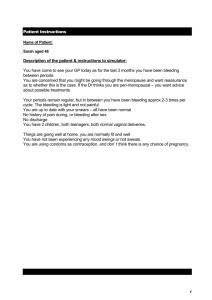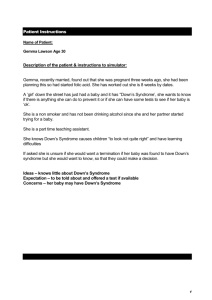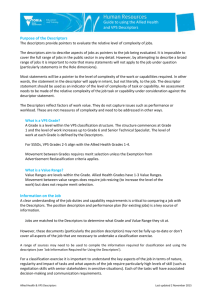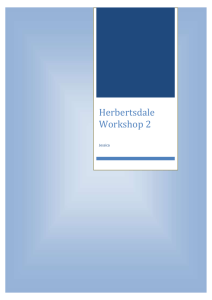Modelling the binding constant for potential drugs
advertisement
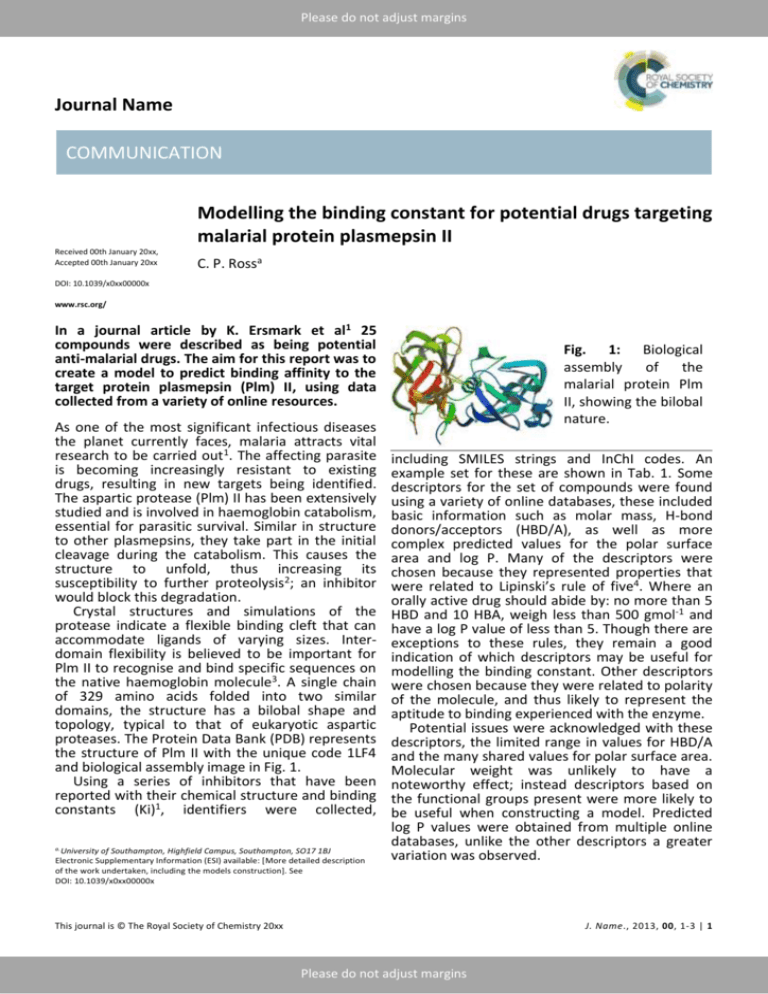
Please do not adjust margins Journal Name COMMUNICATION Modelling the binding constant for potential drugs targeting malarial protein plasmepsin II Received 00th January 20xx, Accepted 00th January 20xx C. P. Rossa DOI: 10.1039/x0xx00000x www.rsc.org/ In a journal article by K. Ersmark et al1 25 compounds were described as being potential anti-malarial drugs. The aim for this report was to create a model to predict binding affinity to the target protein plasmepsin (Plm) II, using data collected from a variety of online resources. As one of the most significant infectious diseases the planet currently faces, malaria attracts vital research to be carried out1. The affecting parasite is becoming increasingly resistant to existing drugs, resulting in new targets being identified. The aspartic protease (Plm) II has been extensively studied and is involved in haemoglobin catabolism, essential for parasitic survival. Similar in structure to other plasmepsins, they take part in the initial cleavage during the catabolism. This causes the structure to unfold, thus increasing its susceptibility to further proteolysis2; an inhibitor would block this degradation. Crystal structures and simulations of the protease indicate a flexible binding cleft that can accommodate ligands of varying sizes. Interdomain flexibility is believed to be important for Plm II to recognise and bind specific sequences on the native haemoglobin molecule3. A single chain of 329 amino acids folded into two similar domains, the structure has a bilobal shape and topology, typical to that of eukaryotic aspartic proteases. The Protein Data Bank (PDB) represents the structure of Plm II with the unique code 1LF4 and biological assembly image in Fig. 1. Using a series of inhibitors that have been reported with their chemical structure and binding constants (Ki)1, identifiers were collected, a. University of Southampton, Highfield Campus, Southampton, SO17 1BJ Electronic Supplementary Information (ESI) available: [More detailed description of the work undertaken, including the models construction]. See DOI: 10.1039/x0xx00000x Fig. 1: Biological assembly of the malarial protein Plm II, showing the bilobal nature. including SMILES strings and InChI codes. An example set for these are shown in Tab. 1. Some descriptors for the set of compounds were found using a variety of online databases, these included basic information such as molar mass, H-bond donors/acceptors (HBD/A), as well as more complex predicted values for the polar surface area and log P. Many of the descriptors were chosen because they represented properties that were related to Lipinski’s rule of five4. Where an orally active drug should abide by: no more than 5 HBD and 10 HBA, weigh less than 500 gmol-1 and have a log P value of less than 5. Though there are exceptions to these rules, they remain a good indication of which descriptors may be useful for modelling the binding constant. Other descriptors were chosen because they were related to polarity of the molecule, and thus likely to represent the aptitude to binding experienced with the enzyme. Potential issues were acknowledged with these descriptors, the limited range in values for HBD/A and the many shared values for polar surface area. Molecular weight was unlikely to have a noteworthy effect; instead descriptors based on the functional groups present were more likely to be useful when constructing a model. Predicted log P values were obtained from multiple online databases, unlike the other descriptors a greater variation was observed. This journal is © The Royal Society of Chemistry 20xx J. Name., 2013, 00, 1-3 | 1 Please do not adjust margins Please do not adjust margins COMMUNICATION Journal Name Tab. 1: InChI codes and 3D structures for an example set of compounds. Each descriptor was plotted against Ki, with no Model 1: Using HBD, molar volume and log P. significant correlation observed, even with logarithmic and inverse values. However, when used in combination, the data could still be useful. To begin building a QSAR statistical model, the number of descriptors to use was chosen based on the following guidelines: Observations > 5 x (no. of descriptors) Observations > 3(no. of descriptors) As the training set will use 10 compounds, the number of descriptors used should be two. A multivariate method was then used to determine the correlation between descriptors, if the relationship was too close, only one would be included in model building. Testing all the descriptors gives an R2 value of 1, this result is due to the model fitting to noise arising from the numerous descriptors. Removing a descriptor based on the multivariance results, followed by how high the Prob>[t] value was, resulted in four descriptors being leftover. These were modelled as pairs or trios, the three combinations giving the highest residual squared values (R2) were then retained to use on the testing set. 2 | J. Name., 2012, 00, 1-3 This journal is © The Royal Society of Chemistry 20xx Please do not adjust margins Please do not adjust margins Journal Name COMMUNICATION Model 2: Using HBD, molar volume and polar Each model had rather mediocre performance surface area. when it came to predicting the binding constants for the test set; the results are shown in Tab. 2. Whilst there were some strong estimates, the variation showed how weak the models were. Tab. 2: Predicted values for Ki using the constructed models. No. 2 7 9 13 23 Binding Constant Ki / nM Actual Model 1 Model 2 Model 3 47 54.0 391 249 142 -933 -134 -473 7 229 415 351 586 1150 416 415 2900 2200 2200 2200 Conclusions Model 3: Using HBD and molar volume. Using data for the potential anti-malarial drugs, QSAR models were produced. They were not able to accurately predict binding energy; this is likely to be due to having such a small data set. The lack of diversity also contributes to not being able to obtain a reliable model. To judge whether these compounds would be appropriate as anti-malarial drugs requires further assessment of the binding ability and delivery to the target. Whilst some compounds do achieve a low Ki value, suitable for Plm II inhibition, none of the compounds followed all of Lipinski’s rules of five. The lack of adherence to these rues suggests few, if any, are likely to be suitable anti-malarial drugs. Notes and references 1 K. Ersmark et al, J.Med.Chem., 2005, 48, 60906106. 2 AsparticAcid Proteases as Therapeutic Targets, ed. A. K. Ghosh, John Wildey & Sons, 2011. 3 A. Asojo et al, J.Mol.Biol., 2003, 327, 173-181. 4 P. Duchowicz et al, Bioorg.Med.Chem., 2007, 15, 3711-3719. This journal is © The Royal Society of Chemistry 20xx J. Name., 2013, 00, 1-3 | 3 Please do not adjust margins


